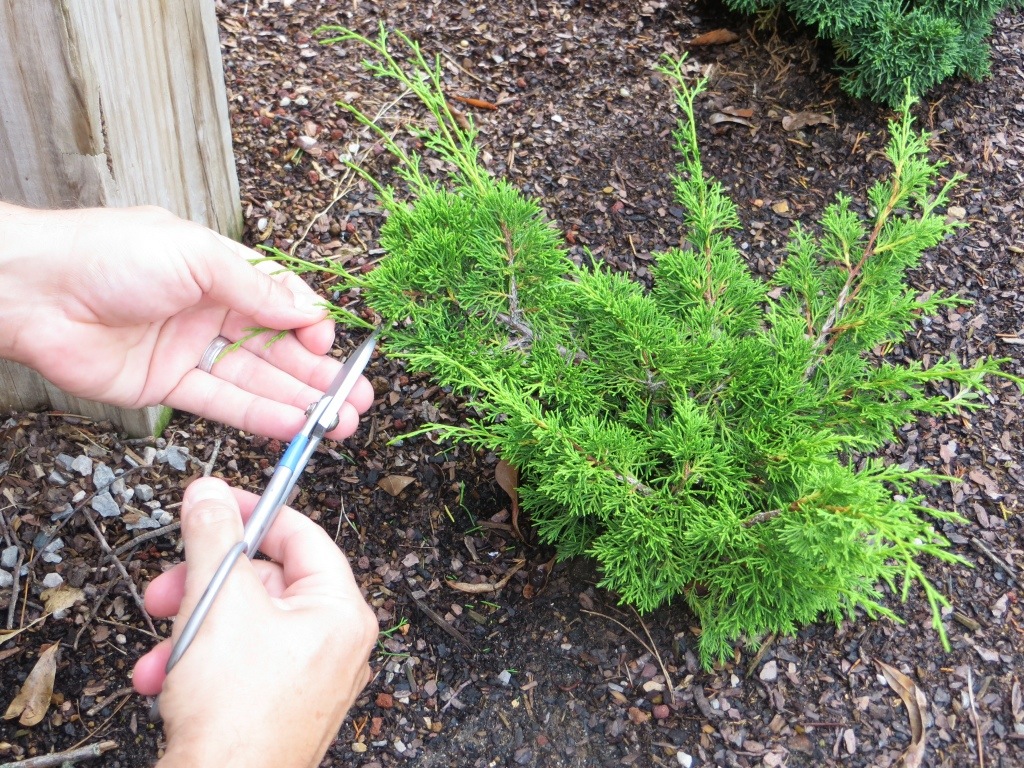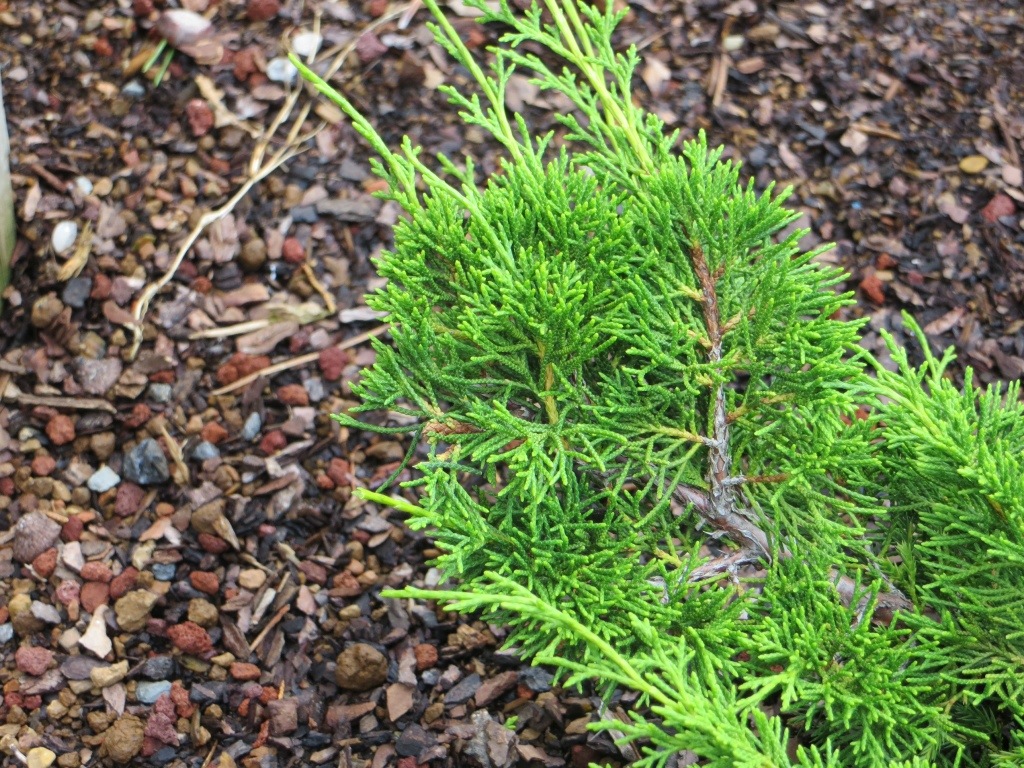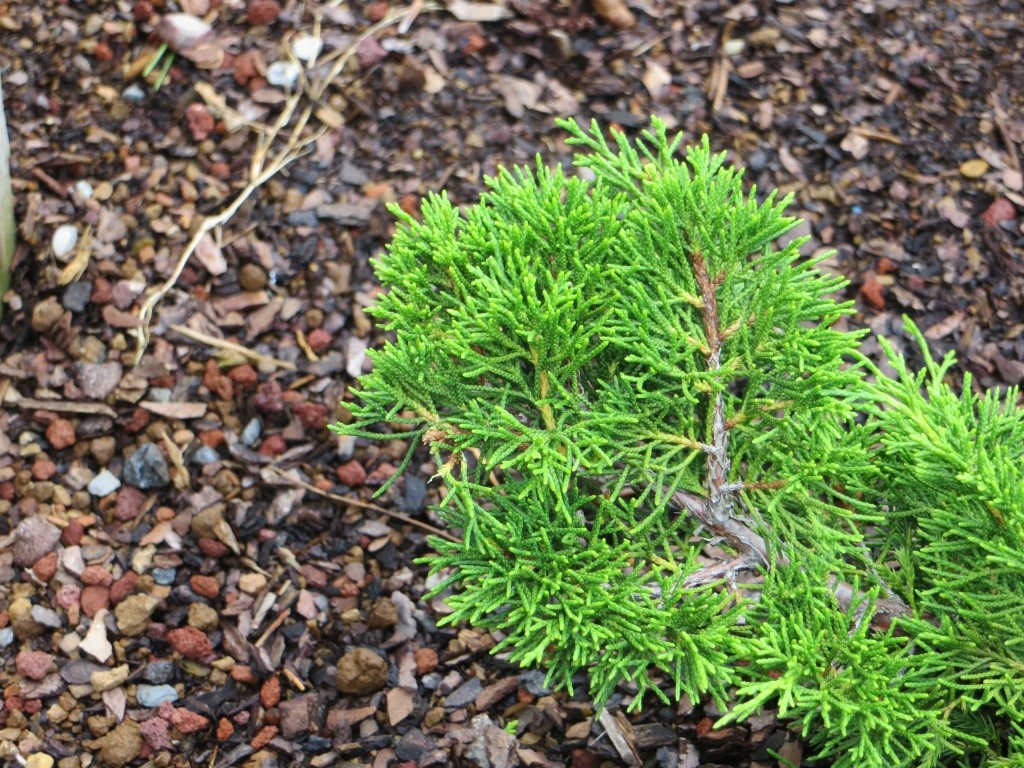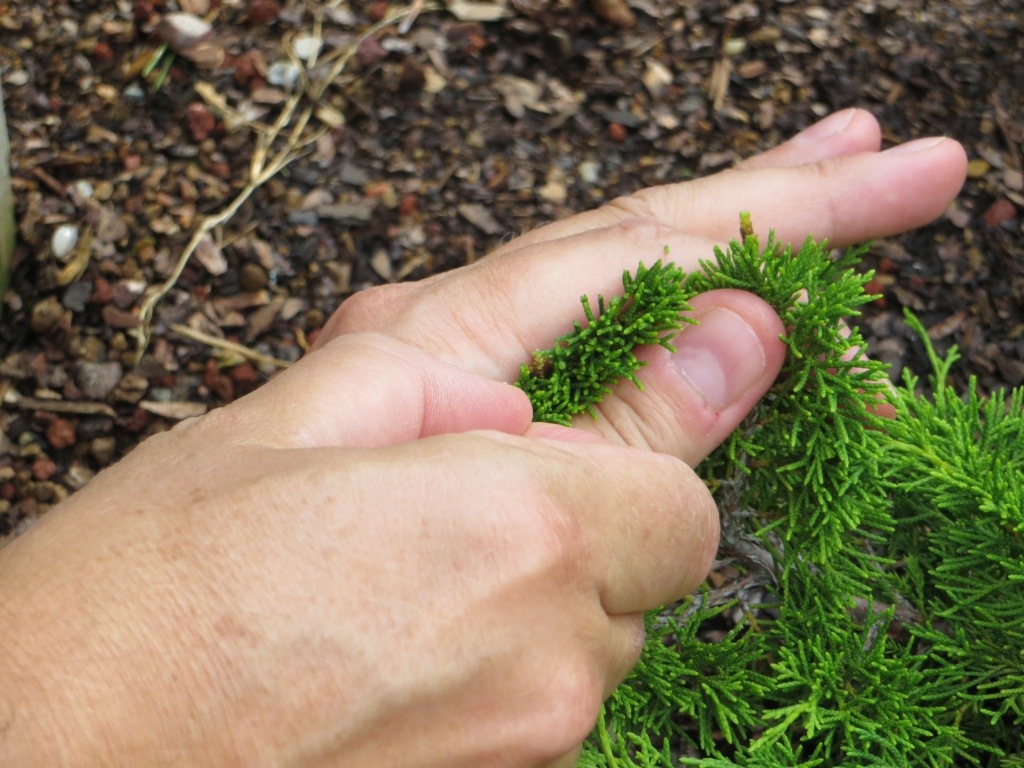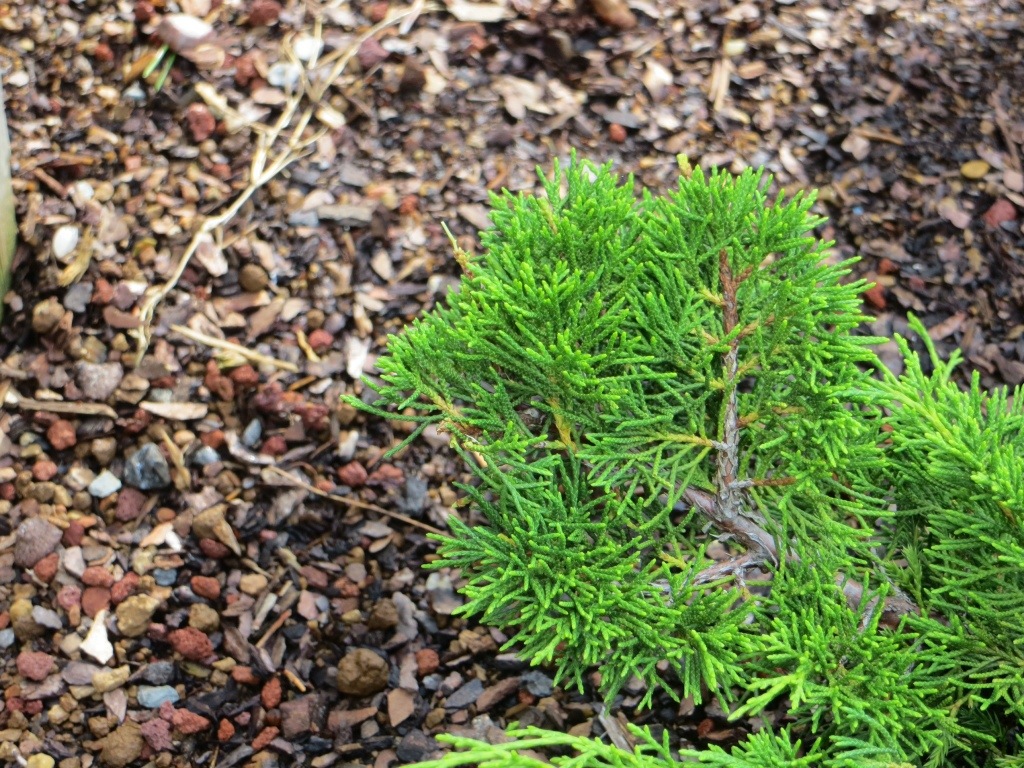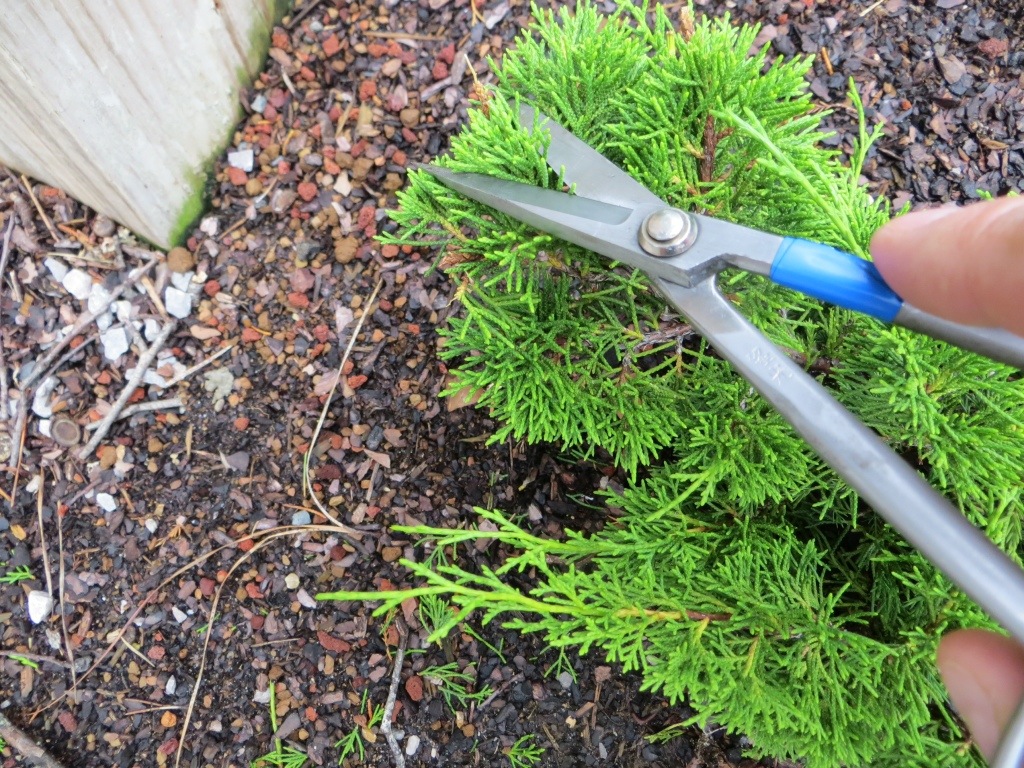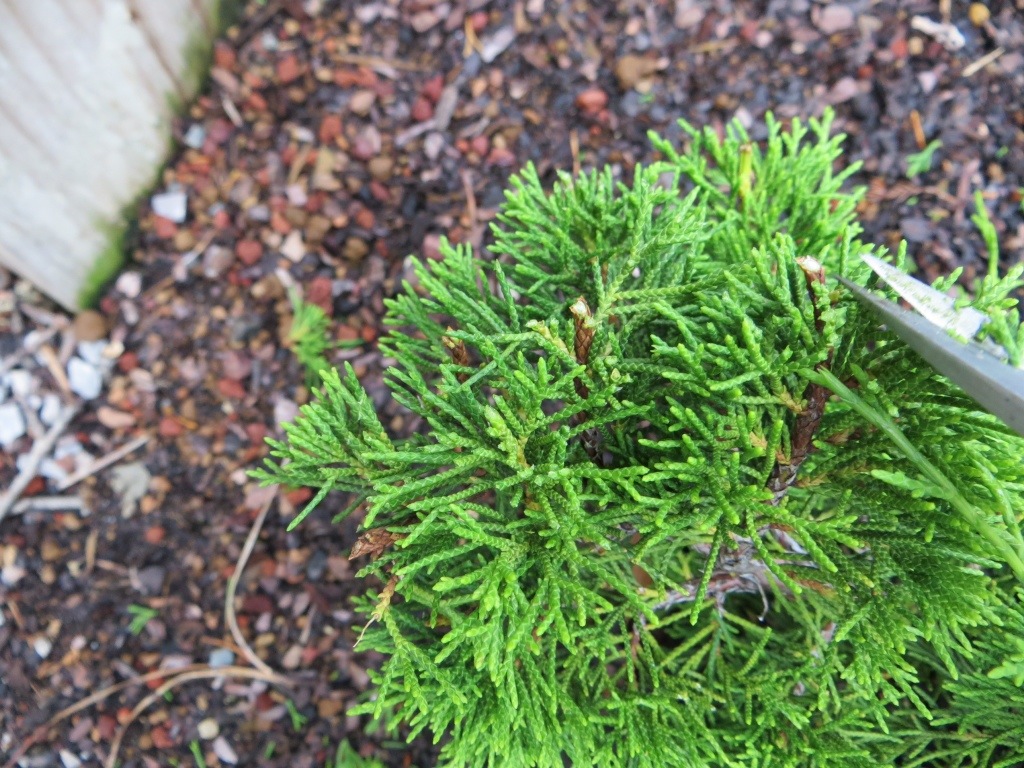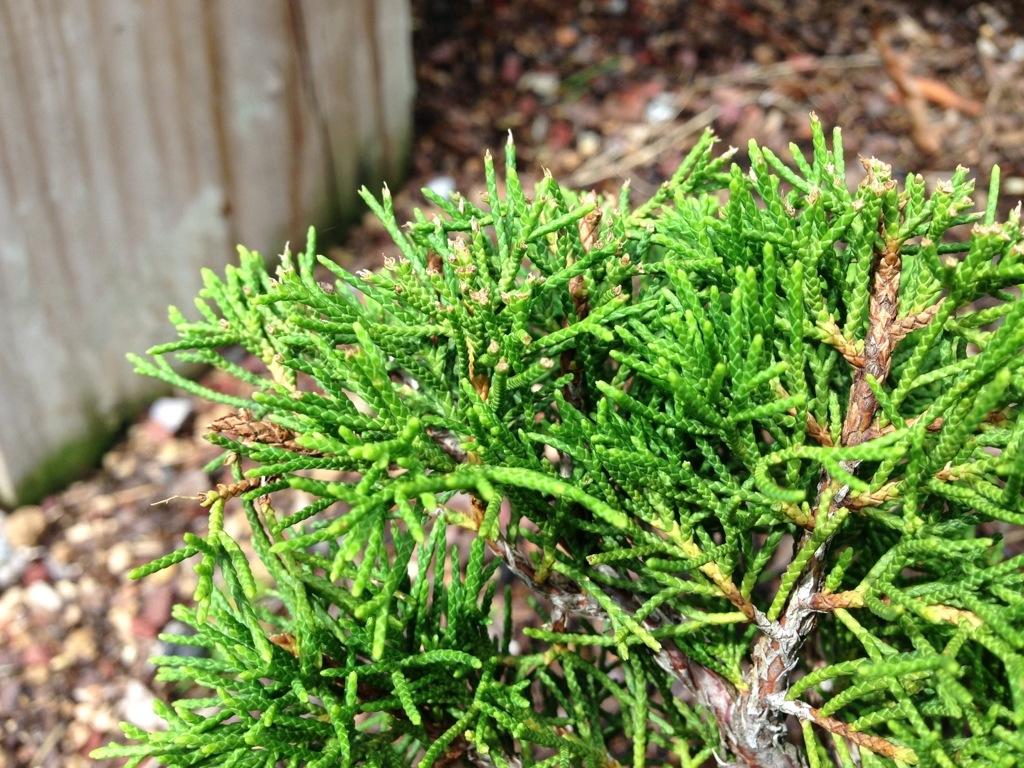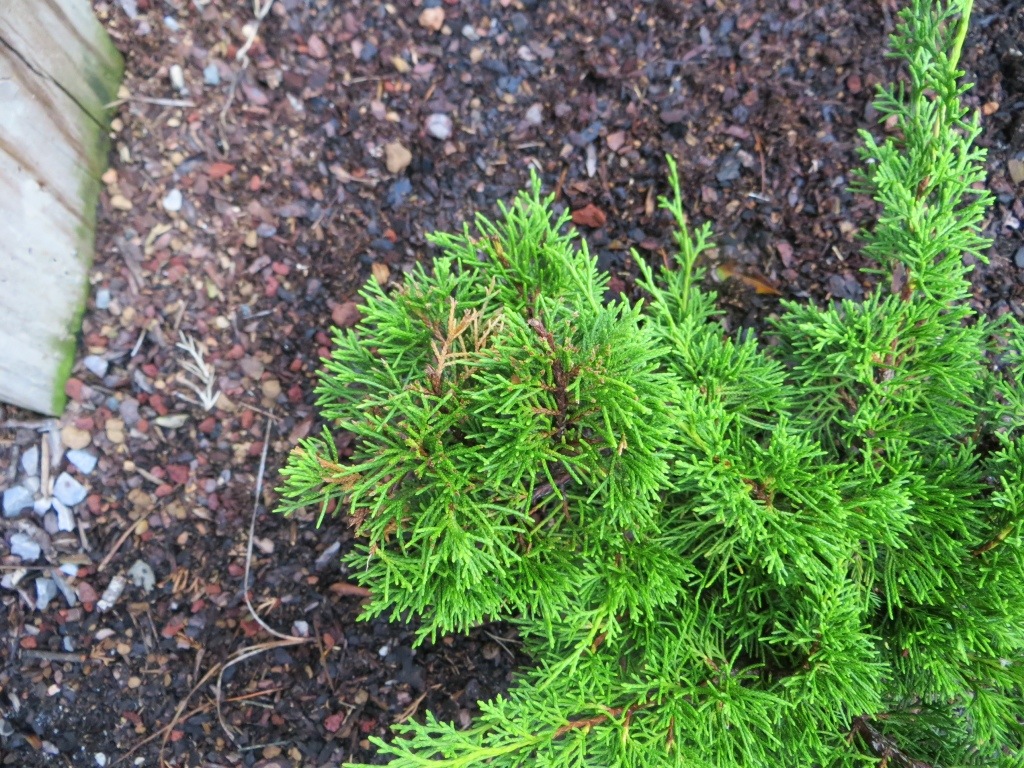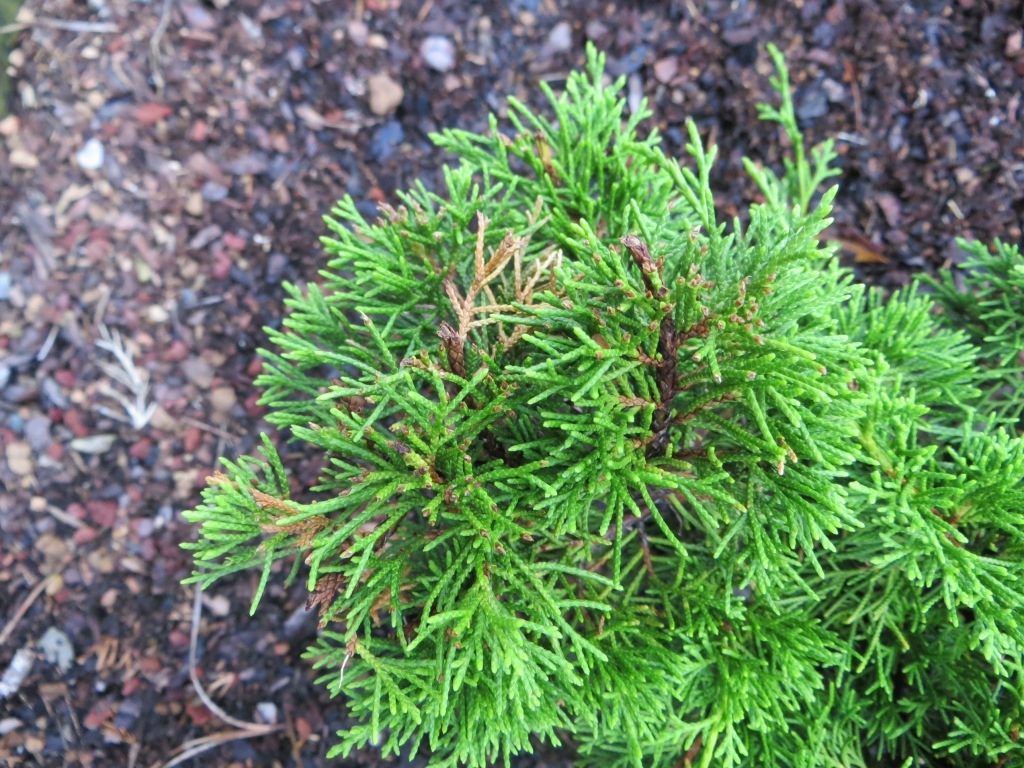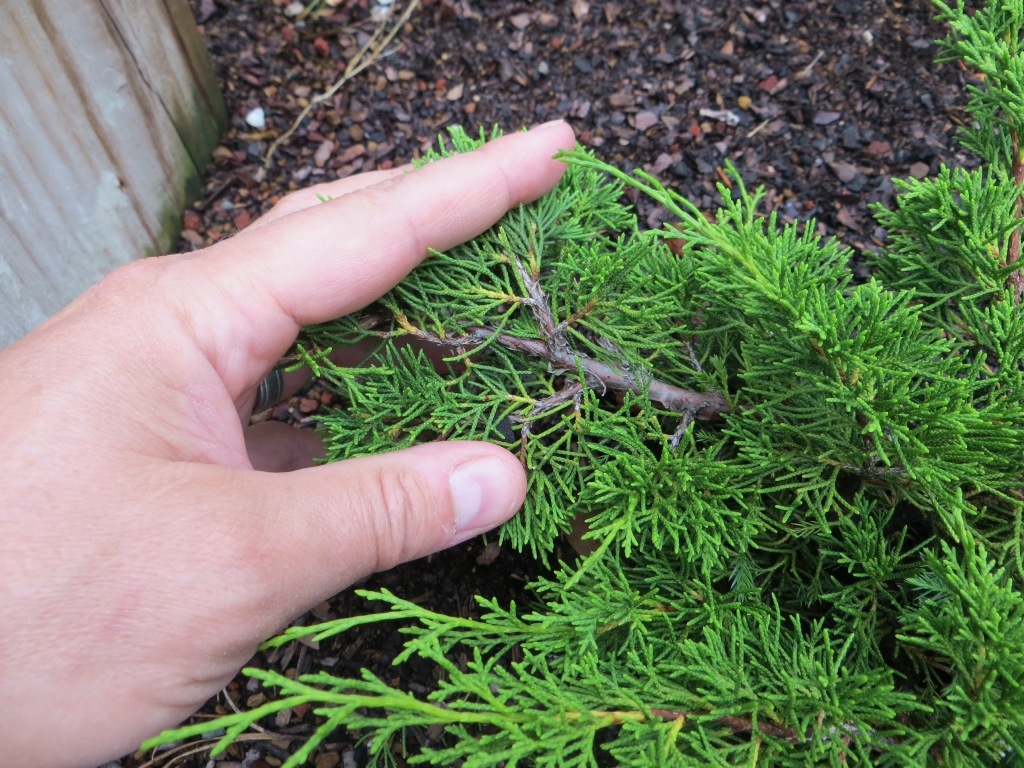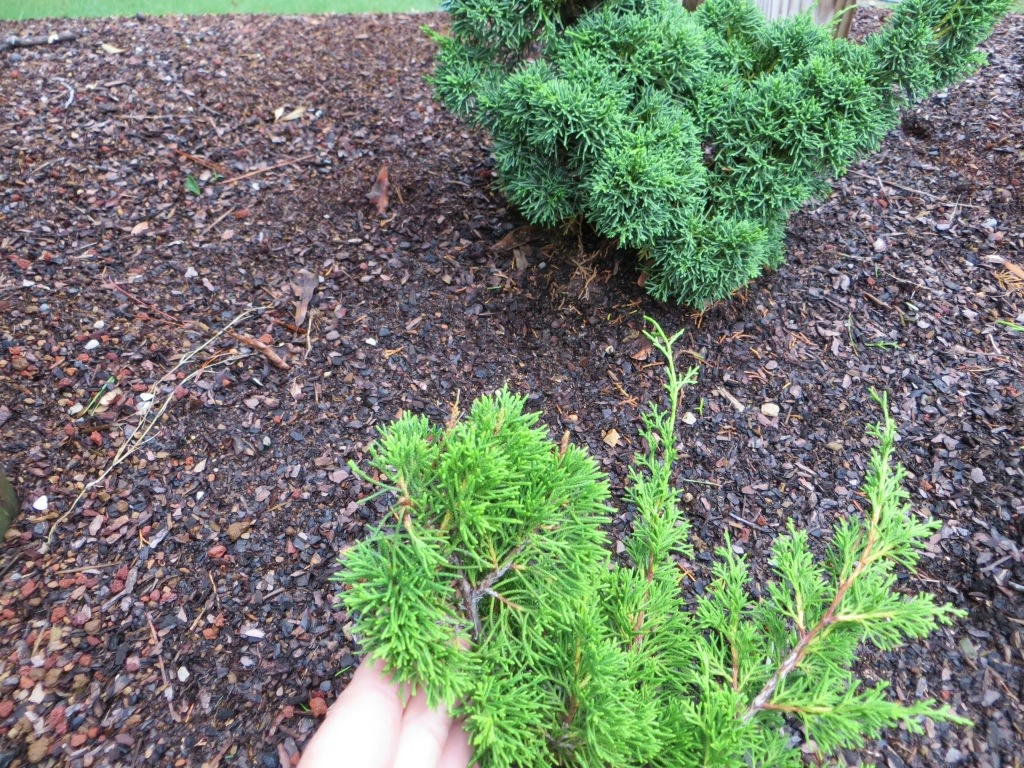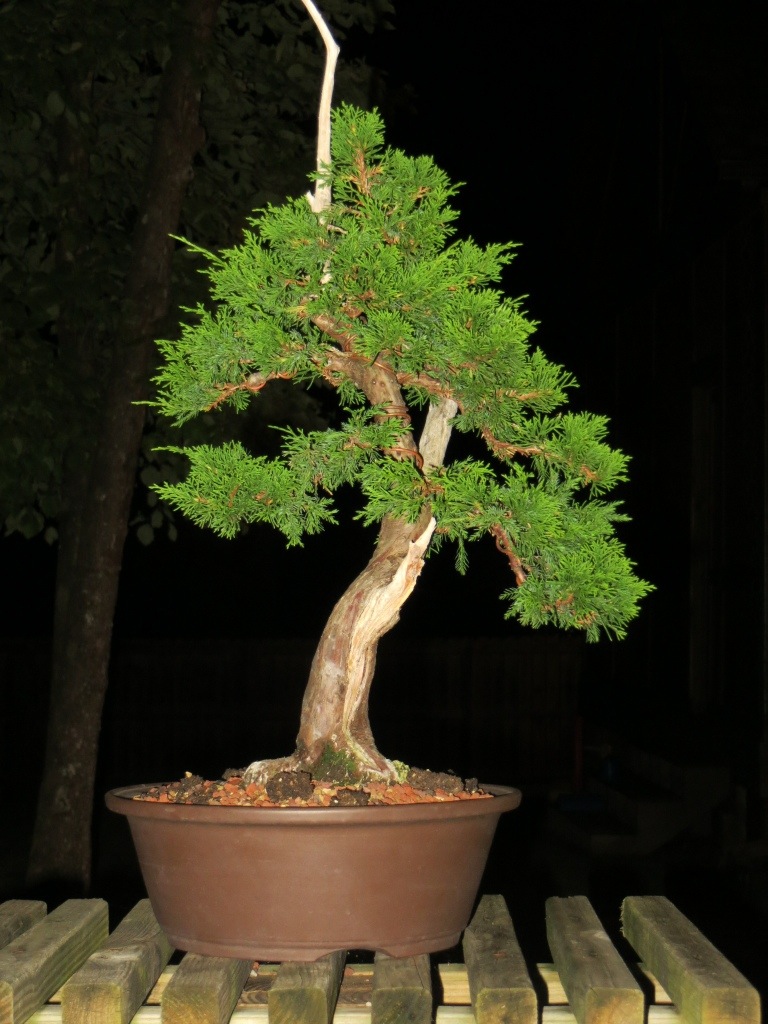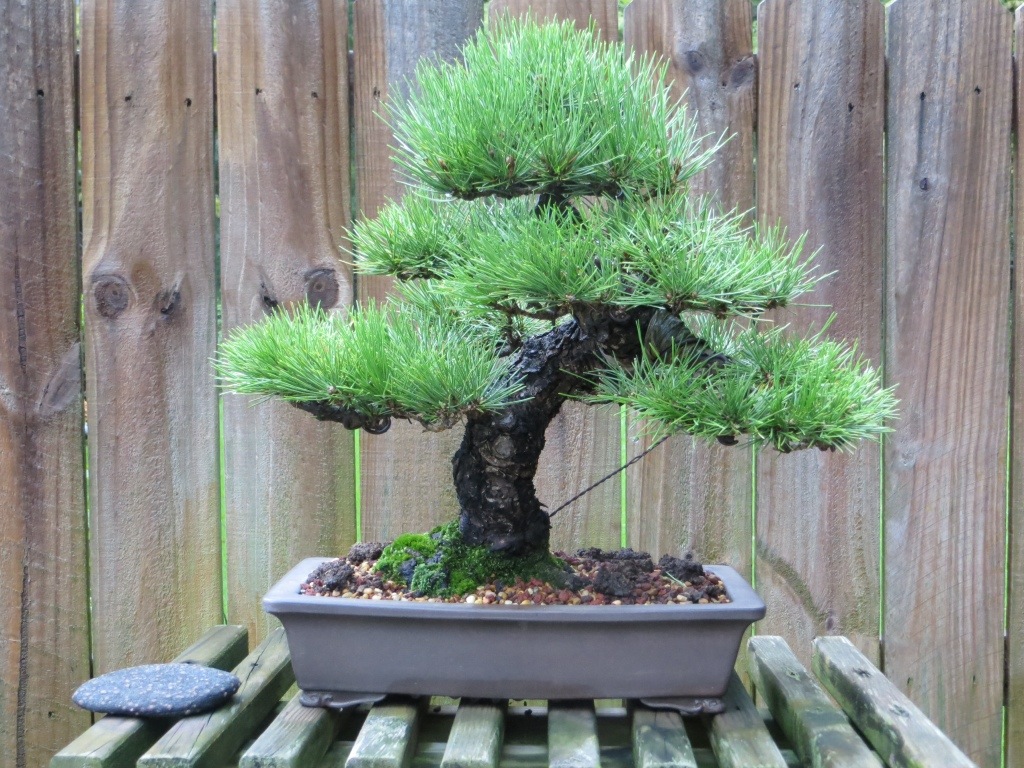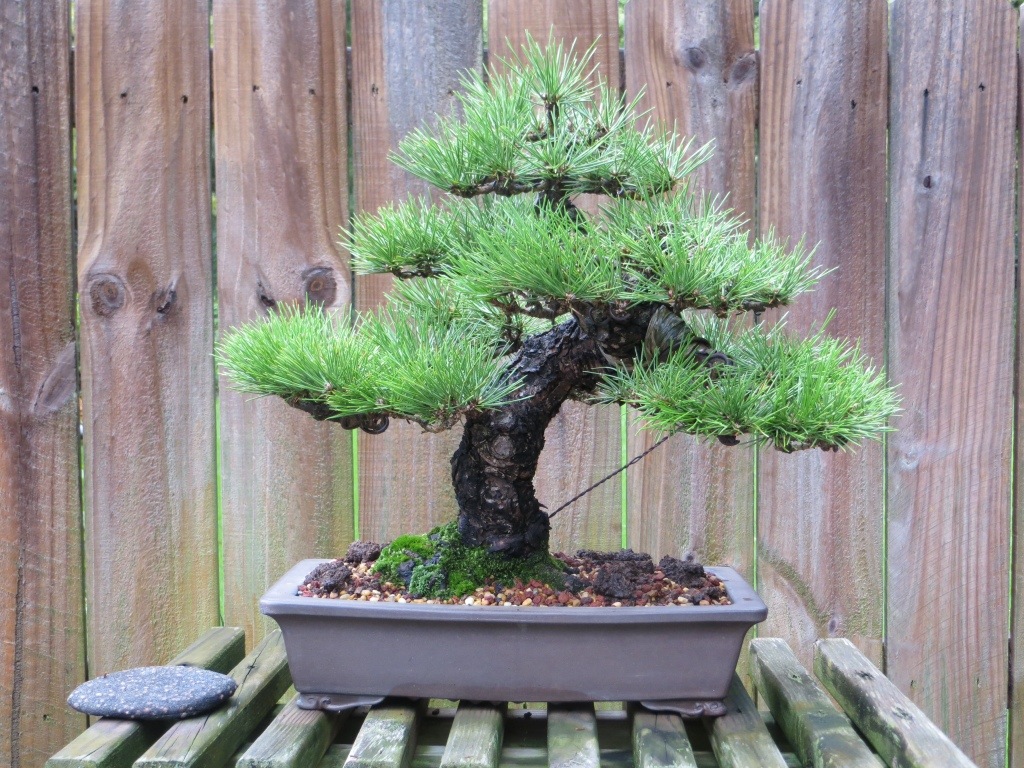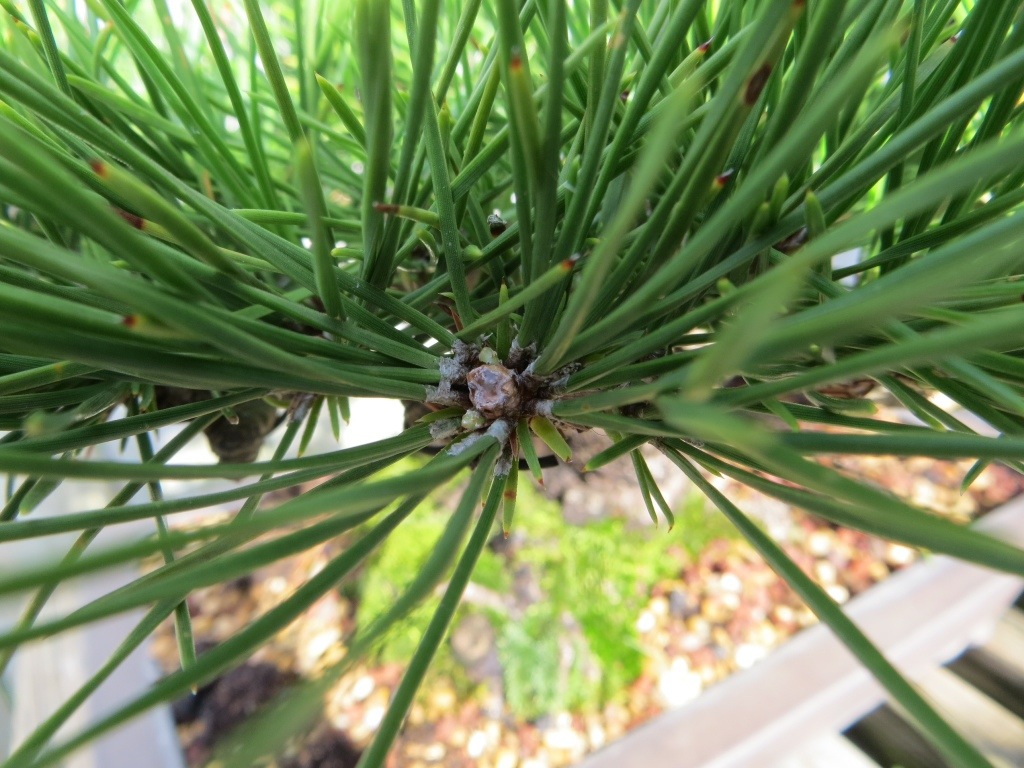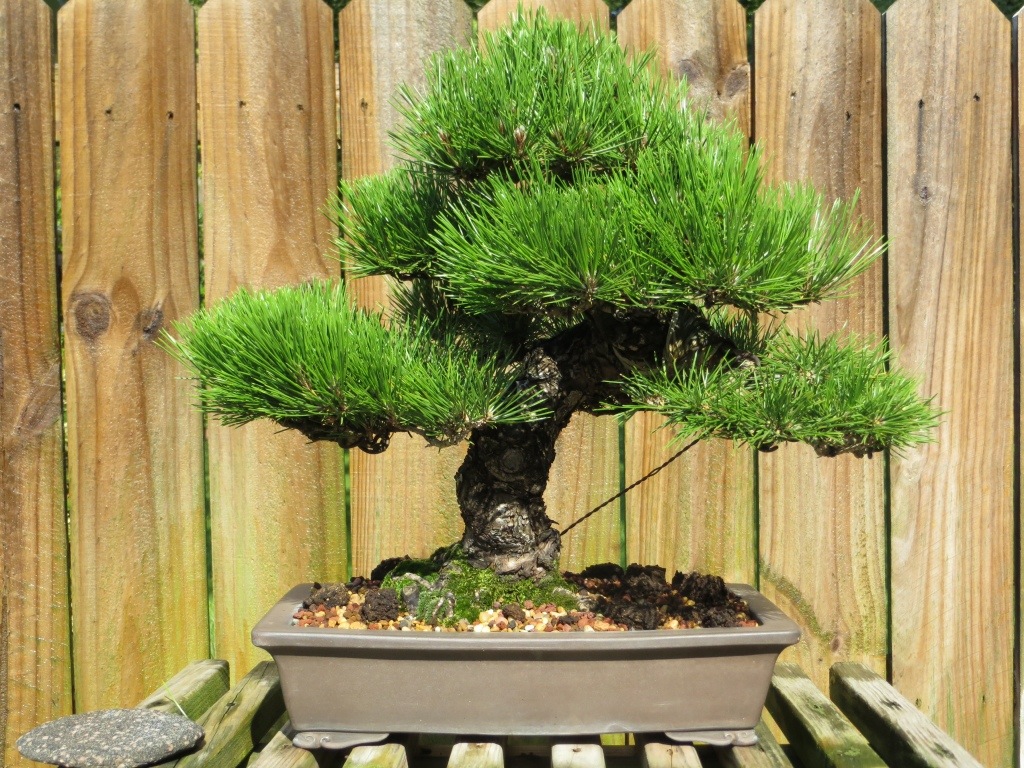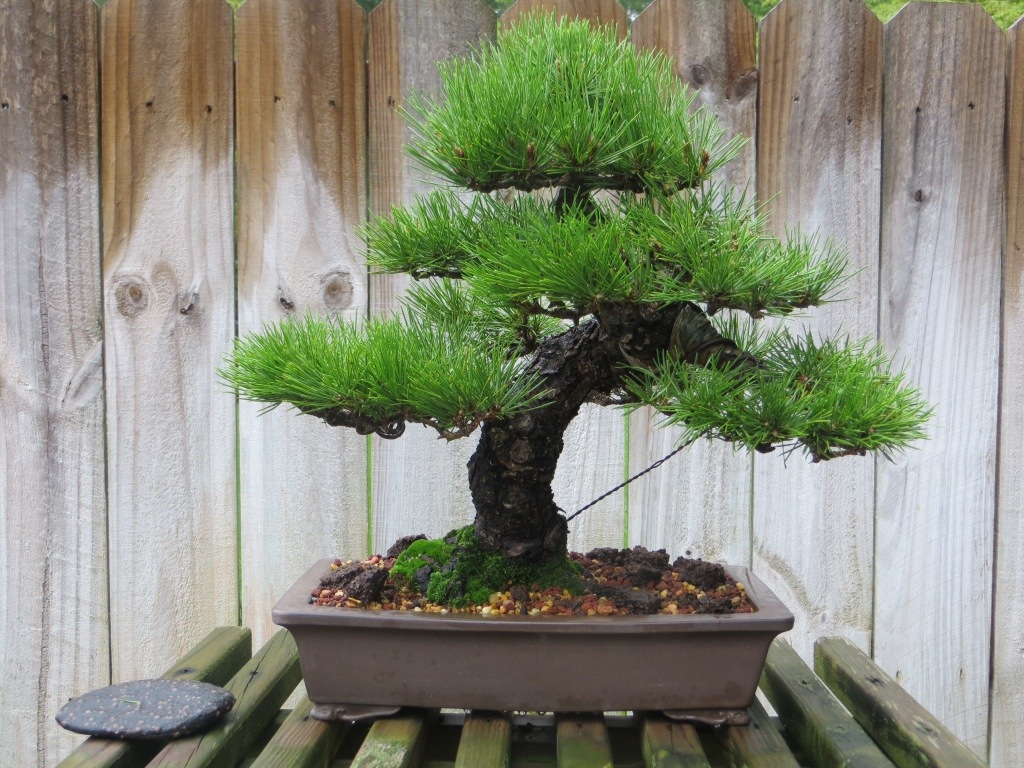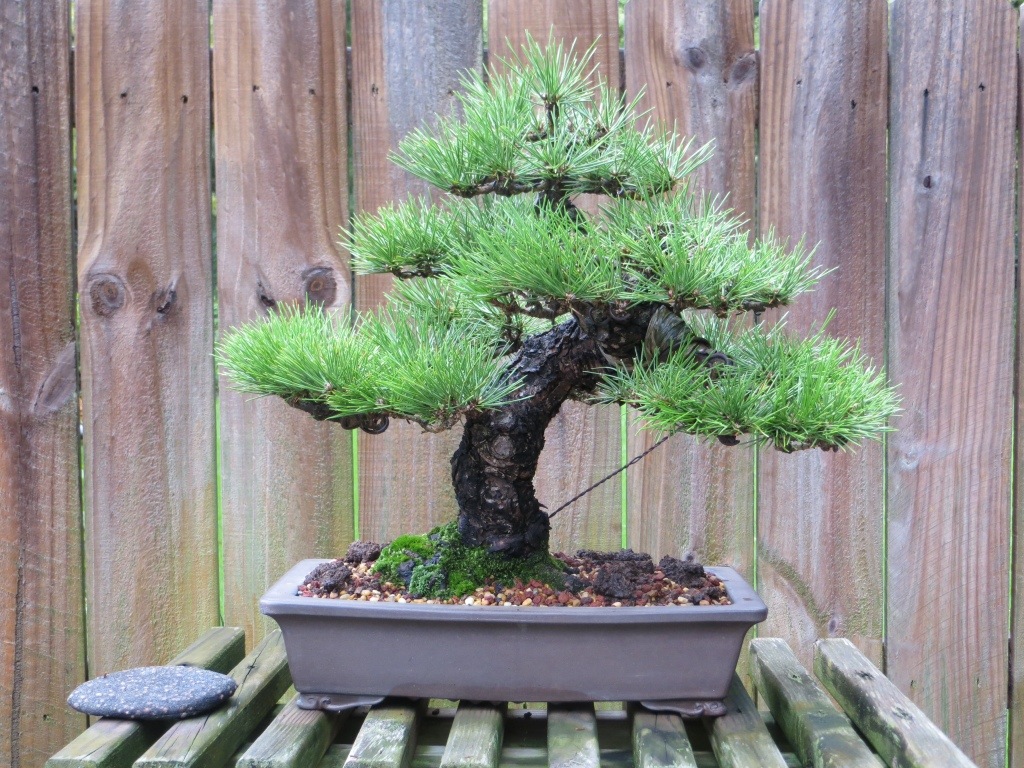Pinching is removing the new extension growth. Maybe for purposes of clarity, we can call it cutting or trimming. While terminology is important, the technique is really what matters.
Pinching a juniper’s foliage using a “Grip And Rip” method is how I was taught to handle new growth on a juniper…nearly 20 years ago. It is now accepted (more likely, now properly translated) that junipers are “pinched”, we’ll say trimmed, by removing only the extending growth with scissors rather than shearing off all the growing tips like a Cost-Cutters trainee haircut. So using this Itoigawa as an example…
DO THIS:
NOT THIS:
AND DEFINITELY NOT THIS:
What’s the difference? Every tip of foliage is a growing tip. The accepted technique leaves more growing tips intact, and balances the strength by only removing the strongest. The “grip and rip” technique removes all the growing tips in that area.
After a few days, sheared areas look like this:
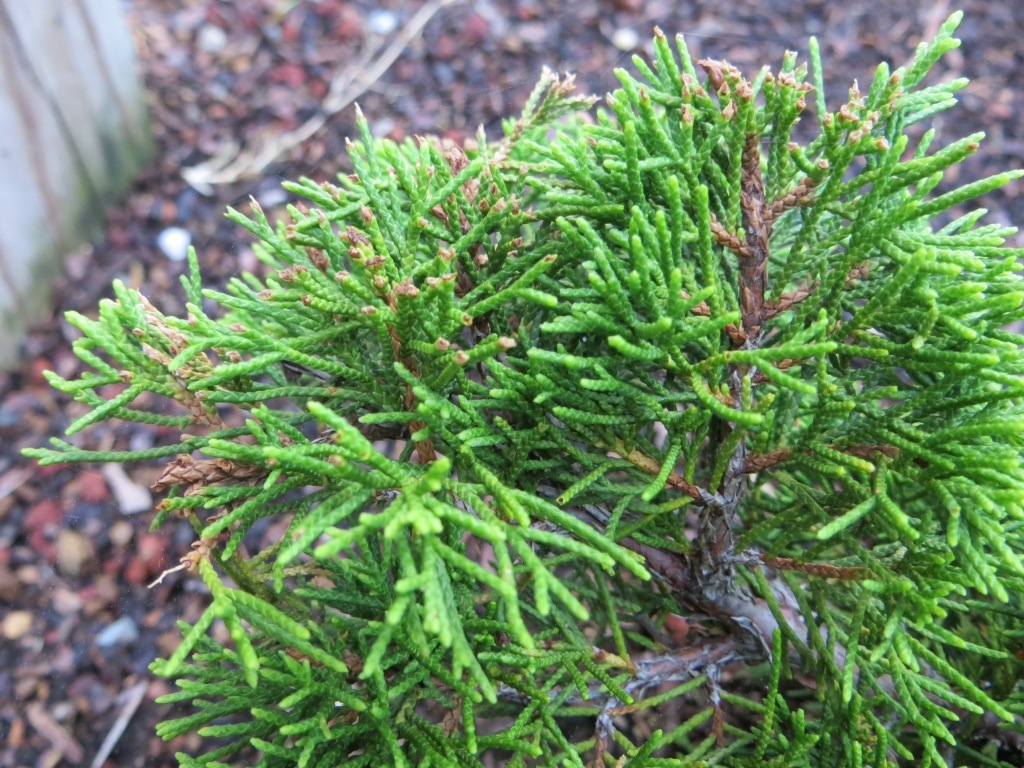
And 2 weeks later, brown tips and die-back:
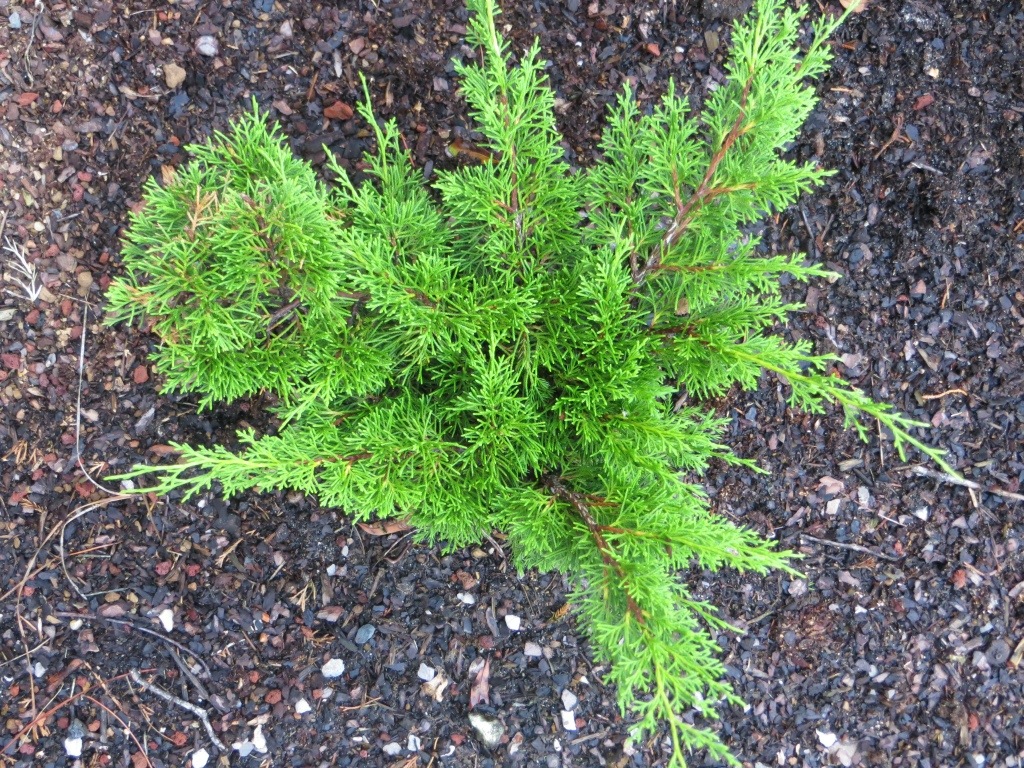
While we’re on the subject, one of the many great characteristics of Itoigawa junipers is their tendency to grow in an alternating branch pattern. This makes pruning and wiring easier. Notice how the branchlets are emerging alternately from the main branch?
This Itoigawa is one of a dozen or so cuttings made in ’11, and they’re doing well. I’m experimenting with growth rates in the ground vs. in cans, so more on that down the road. Right now, the kishus (top two) are growing faster than the itoigawas (bottom 3…right one is 1-year old). Both were about the same size when planted (+/- 4″ pot size), but the kishus had more roots.
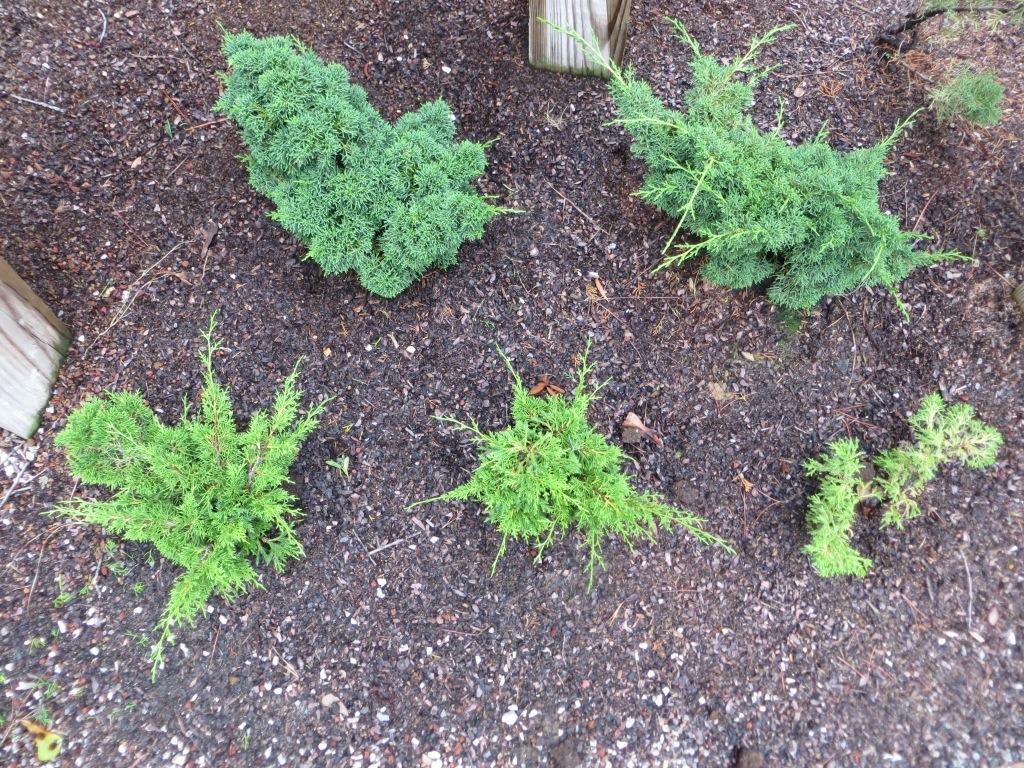
The foliage difference is stark:
Here’s the parent tree, before and after a little trim. I think I like the rounded profile a bit better…what say you?
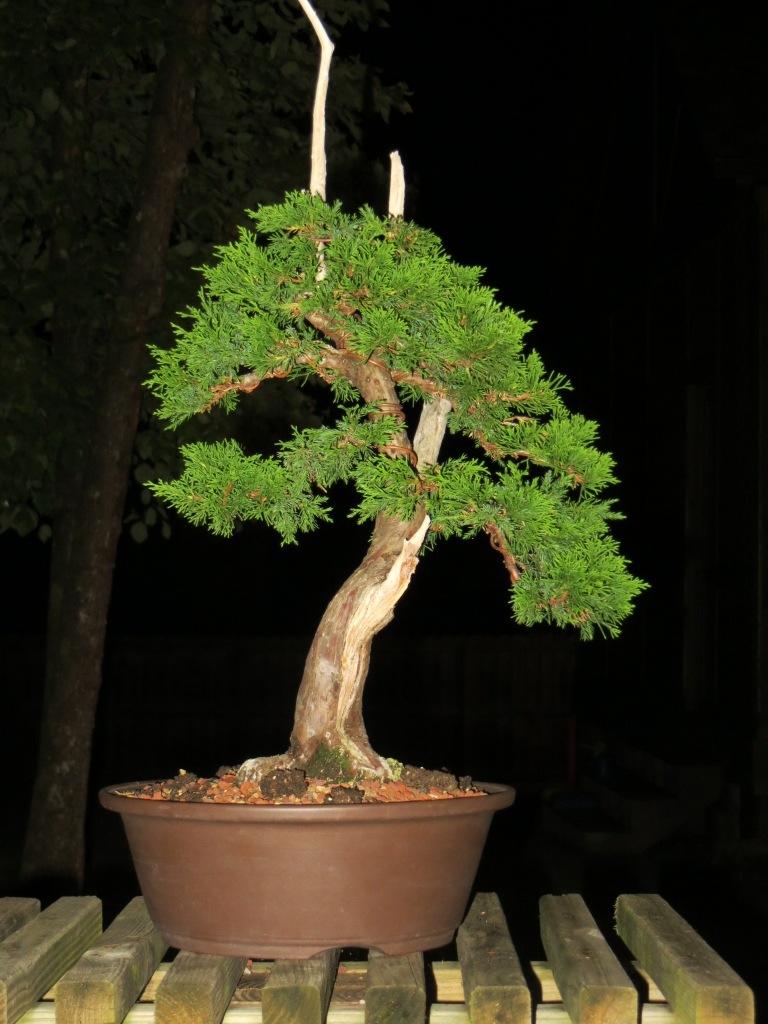
Itoigawa good! Next week, some heavy pruning on a larger shimpaku, in preparation for its first styling. Thanks for reading.

